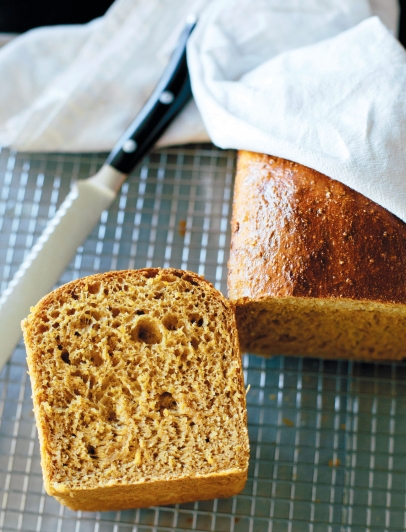How a Fisherman Learned to Bake
The One Hundred Percent True Tale of Anadama Bread and Its Recipe
One briny New England morning, a fisherman, from Rockport or Gloucester, woke to find his wife, Ana, was gone.
His feet stretched and ached and went right into his slippers.
They were gone.
His hand stretched and ached and reached for the bedside lantern. It was gone.
She had taken them.
Labrador. Clothes. His favorite comb.
She had taken it all.
Without a lantern, he shuffled slipperless into the kitchen to see if she was there.
She was not.
Into the cupboard he thrust his hand for a drinking glass. There were none.
All she had left the fisherman was a small bin of wheat flour, an insipid bag of cornmeal, and a pint of forgotten molasses.
The fisherman had never made food for himself, but he was very hungry. And fishermen know that a little morsel, however hard to come by, can be a very comforting thing when you are alone.
He took a bedpost and broke it into kindling, all the while murmuring, “Ana, damn her.”
The cornmeal and molasses he stirred together with his sad hand. He took his clothes from the day before; they were wet with the sea. He wrung them over the flour. The sticks he lit with his last match. He combined the cornmeal, molasses, and flour into a coffee can and sat it over the bedpost embers. As he sat there on a little stump of headboard, a line of escaping steam from the coffee can came by his nose. Never before had he experienced the serious pleasures of caramelization and nonenzymatic Maillard reactions. He was shook.
After a while, he upended the simple ingredients from the can and saw that what had been pale, gold, and speckled with meal had turned to rich, brazen brown. The crust sang forth Donizetti’s “The Elixir of Love” and he held it close to his ear.
He cried briny tears that New England day.
Holding his fresh singing loaf, he looked out his window: “Ana, bless her.”




